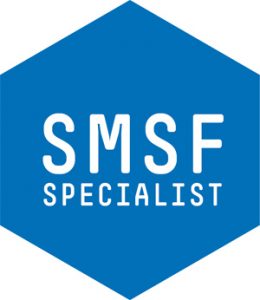Acquiring shares under an employee share scheme (ESS) via your self managed superannuation fund (SMSF) may appear attractive but greater uncertainty has arisen following the ATO’s recent ruling, LCR 2021/2, on the application of the non-arm’s length income (NALI) rules to such a transaction.

This ruling focuses on NALI arising from the non-arm’s length expenditure (NALE) changes to s 295-550 of the Income Tax Assessment Act 1997 (Cth) (ITAA 1997) which were effective from 1 July 2018.
Typical employee share schemes
Many employers (including small, medium and large employers) seek to encourage their employees to work in the best interests of the company by offering an ESS to align their employees’ interests with the business. Research suggests that companies having an ESS generally perform better than companies that do not offer such plans.
Companies typically offer employees the opportunity to acquire shares in the company at a discounted price via an ESS.
There are also a range of tax rules that cover the taxation of ESS interests and certain employees may qualify for some tax relief, such as the ability to defer the taxing point or obtaining a more favourable tax treatment compared to ordinary income (s 83A-115 of the Income Tax Assessment Act 1997 (Cth)).
Under many ESSs, employees can nominate a related entity, such as a family member, a family company, a family trust or an SMSF to acquire the shares on offer to the employee . Naturally, s 66 of the Superannuation Industry (Supervision) Act 1993 (Cth) (SISA) needs to be considered if an SMSF acquires an asset from a member or related party. Since we have previously covered s 66 rules in a prior article we focus solely on the potential application of NALI in this article. For access to our prior article please click here.
Note that the tax rules generally assess the employee on any discount granted via an ESS even if the employee nominates another family member or related entity such as an SMSF that ends up acquiring the shares.
How have discounts on ESSs been treated prior to LCR 2021/2?
The ATO generally treats discounts on shares as assessable income to the employee.
Where the shares are nominated to an SMSF, the ATO has also treated any discount as a contribution. This is confirmed on the ATO webpage QC 26221 where the ATO states:
A super contribution is anything of value that increases the capital of a super fund and is provided with the purpose of benefiting one or more particular members of the fund, or all of the members in general.
For example, when shares acquired under an ESS are transferred to an SMSF at less than market value, the acquisition results in a super contribution because the capital of the fund increases and the purpose of the acquisition is to benefit a member, or members, of the fund.
See also: Taxation ruling TR 2010/1 Income tax: superannuation contributions
How does LCR 2021/2 impact shares acquired by SMSFs under ESSs?
The ATO state in LCR 2021/2 that:
[18] [NALE] incurred to acquire an asset (including associated financing costs) will have a sufficient nexus to all ordinary or statutory income derived by the complying superannuation fund in respect of that asset. This includes any capital gain derived on the disposal of the asset …
It therefore appears that an SMSF that purchases an asset like a share at a discount will result in all future dividends and net capital gain on disposal being NALI and broadly taxed at 45%. Moreover, the amendments introducing the NALE changes to s 295-550(1)(b) and apply retroactively regardless of when the ‘scheme’ was entered into.
Thus, it appears that SMSFs may be exposed to NALI on dividends and net capital gains for shares acquired at a discount under ESSs despite those shares being acquired prior to 1 July 2018.
Does TR 2010/1-DC have any relevance?
The ATO also recently issued a revised draft for consultation ruling on what is considered a contribution (ie, TR 2010/1-DC). This revised ruling seeks to clarify the divide between what is a ‘contribution’ versus what is ‘NALI’. In particular, the ATO’s broad view is that an asset purchased for less than its market value gives rise to NALI. In contrast, an in specie contribution that is recorded for less than its market value is to be treated as a contribution. The relevant draft paragraphs that appear in TR 2010/1-DC state:
25A. The acquisition of an asset by a … [SMSF] … is not a contribution … (an in specie contribution) where the asset is purchased from an entity under a sale contract. However, an in specie contribution may be made in conjunction with the purchase of an asset. This may occur, for example, where 50% of the asset is purchased with the remaining 50% of the asset being subject to an in specie contribution.
25B. An in specie contribution is required to be reflected at its market value in the fund’s accounts and the member’s superannuation interest. …
25C. In circumstances where a … [SMSF] … purchases an asset under a contract at less than market value, the superannuation provider has incurred [NALE] under a non-arm’s length dealing for the purposes of applying the ‘[NALI]’ provisions in section 295-550. We do not consider that the difference between the consideration paid (if any) and the market value represents an in specie contribution being made as the asset has been acquired under the terms of the contractual agreement and not through an in specie contribution.
An SMSF typically purchases ESS shares by paying the company directly. The company provides the discount to the SMSF as part of the ESS provisions. These provisions form part of the contractual terms and conditions relating to the SMSF acquiring the ESS shares as the nominated purchaser.
Thus, it appears the ATO’s latest view is that discounts offered to SMSFs on ESS shares are no longer contributions. This is a major change to the long-established practice based on TR 2010/1 which has been a binding public ruling that has been relied on for the past 11+ years. The ATO’s latest draft view also differs from the ATO’s current view reflected on its website at QC 26221.
Is there any further analysis that may assist?
Let’s examine a typical ESS example:
- John is offered $10,000 worth of shares in his employer’s company via an ESS for $9,000.
- John nominates his SMSF as the purchaser.
- John’s SMSF pays $9,000 to the company for the shares.
- Subject to any tax concession, John accounts for the $1,000 discount in his personal tax return.
- John’s SMSF records $1,000 as a non-concessional contribution (NCC).
- John’s SMSF has a cost base of the shares of $10,000 reflecting the $9,000 payment and John’s $1,000 NCC.
Arguably, there should be no NALI to John’s SMSF in respect of the shares as the correct amount has been provided (ie, payment of $9,000 under the ESS contract and a contribution of $1,000). However, the ATO’s latest commentary appears to provide that unless the purchase contract specifies the relevant part of the asset being acquired to the part that is being contributed by way of in specie contribution, then NALI will apply where part of the asset being purchased is purchased at a discount. This theory is reflected in LCR 2021/2 at [28] and [29] as follows:
- In situations where the terms of a contract between the complying superannuation fund and the seller of the asset make it clear that the asset is being purchased by the fund, the difference between the consideration paid (if any) by the fund and the market value of the asset purchased under the contract cannot represent the value of an in specie contribution made by the other party.
- An in specie contribution can be made in conjunction with a complying superannuation fund purchasing part of an asset where a contract makes it clear the fund is only acquiring part of the asset. In such situations, the fund:
- purchases the interest in the asset specified under the contract, and
- receives the in specie contribution of the remaining interest in the asset.
… However, if the fund pays less than market value for the part of the asset purchased under the contract, then the non‑arm’s length expenditure provisions apply for the reasons outlined in paragraph 27 of this Ruling. This would be the case even if the in specie contribution relating to the other part of the asset is recorded at market value in the fund’s accounts and is allocated to the member’s superannuation interest.
Is there a concession for certain discounts in LCR 2021/2?
The further argument that may be open to John’s SMSF is that even though there is a ‘scheme’, the parties to that scheme (eg, John, his employer and the SMSF) have acted at arm’s length, however the ATO’s view regarding discounts is not satisfied in this case if the discount is not available to all employees of John’s employer. In particular, LCR 2021/2 at [51] states:
- A complying superannuation fund might enter into arrangements that result in it receiving discounted prices. Such arrangements will still be on arm’s length terms where they are consistent with normal commercial practices, such as an individual acting in their capacity as trustee (or a director of a corporate trustee) being entitled to a discount under a discount policy where the same discounts are provided to all employees, partners, shareholders or office holders.
Many ESSs are only offered to a particular class of employee, eg, senior managers and executives rather than to all employees and, in certain cases, shares may be offered to greater than say 75% of permanent employees who have completed at least 3 years of service (for example, as required by s 83A-105 of the ITAA 1997).
Thus, unless ESS discounts are offered to all employees or all office holders or all shareholders, as relevant, the SMSF is unlikely to be able to rely on the discount concession in paragraph 51 of LCR 2021/2.
Nevertheless, the argument that the parties have dealt with at arm’s length has merit. However, this argument is only likely to be accepted by the ATO if the correct market value is reflected in relation to John’s in specie contribution (ie, John’s SMSF has recorded $1,000 as an NCC).
In this instance, arguably, there is no scheme that the SMSF is involved with that should invoke NALI as the full market value of the shares is accounted for.
However, the ATO’s latest view expressed in TR 2010/1-DC appears to preclude this argument as the sale contract does not specify the part of the shares that are acquired under the sale contract and the part that is being made by way of in specie contribution as required pursuant to the ATO’s new views outlined in paragraphs 28 and 29 of LCR 2021/2.
This article highlights some shortcomings in the ATO’s latest views on NALE which do not appear to be supported by any case law or legislative basis. The ability to recognise ESS discounts as a contribution (ie, the $1,000 discount recognised as an NCC) has been the acceptable position for many years and we consider it is likely to be the better and simplest approach to administer. Moreover, this is the position that numerous professional and industry bodies submitted as being the preferred approach that should be applied.
Conclusions
SMSFs that do not acquire shares at market value via ESSs risk NALI being applied to future dividends (including any franking credits) and any net capital gain on future disposal of the shares. We recommend that given the uncertainty that currently exists as outlined above, before an SMSF acquires any further ESS shares, expert advice from a tax expert with superannuation experience in dealing with the latest NALI developments be obtained. Indeed, advice should be sought before any dealing with shares previously acquired under an ESS as the tax impact is not yet clear.
Shaun Backhaus and Daniel Butler
28 September 2021
smsfadviser.com























